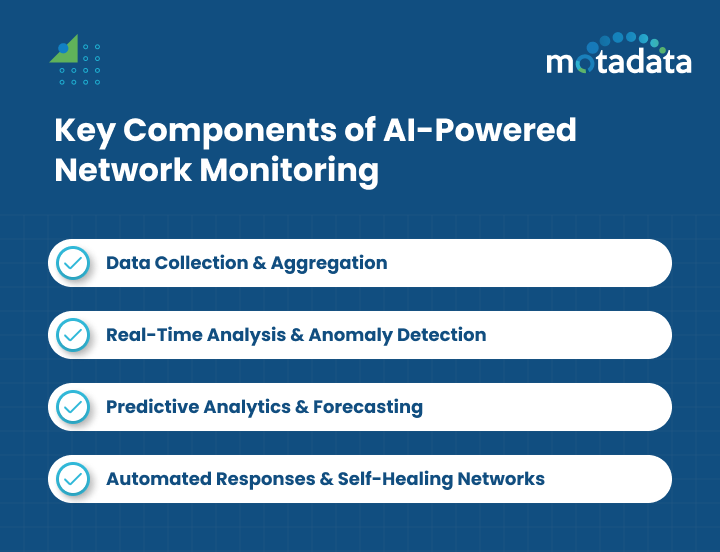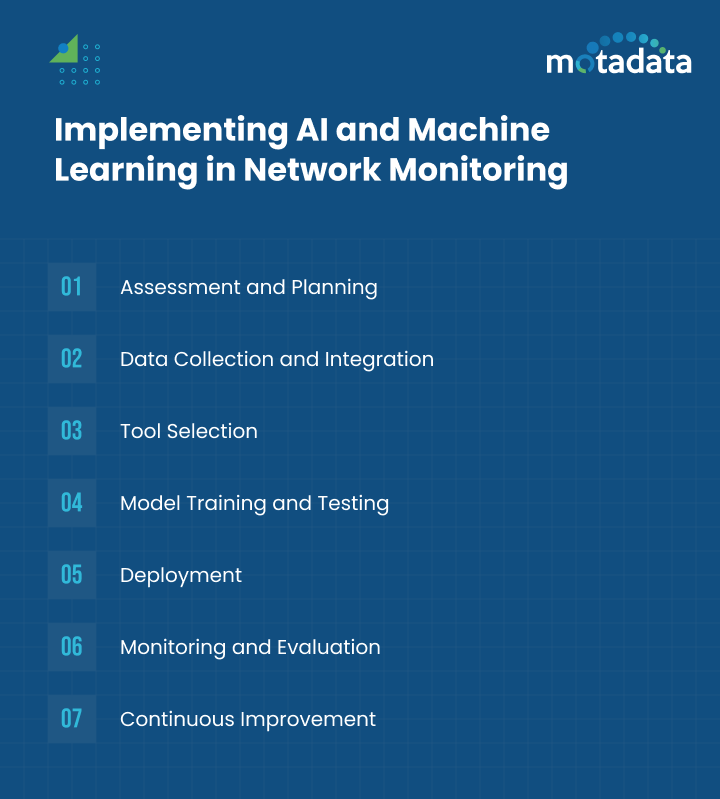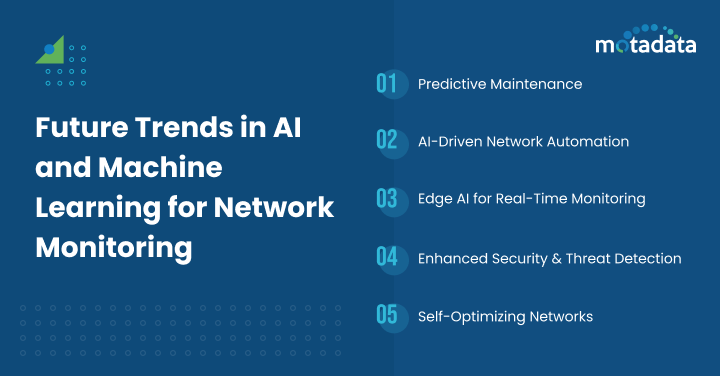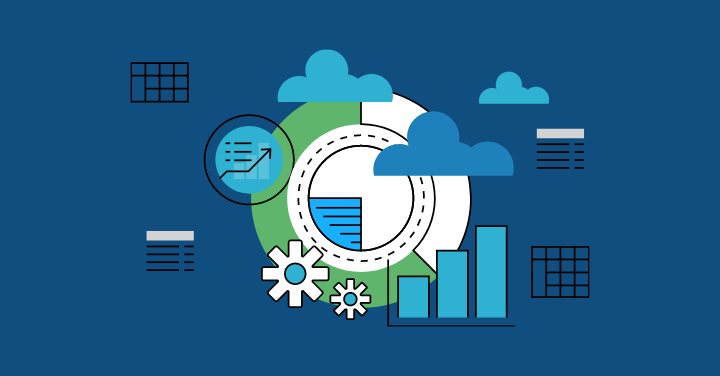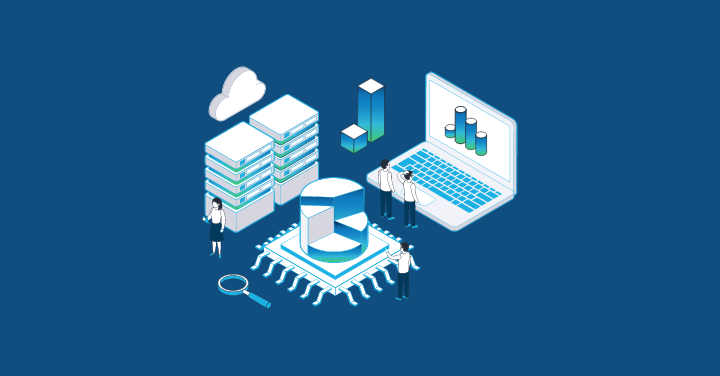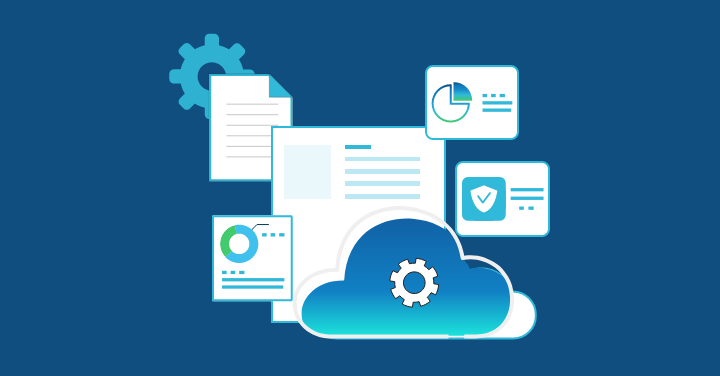In the modern IT environment, network monitoring is vital as it helps businesses deliver seamless connectivity and optimal performance.
An efficient network monitoring system helps organizations keep real-time track of all network operations, identify critical issues, and mitigate problems faster.
However, with the increasing complexity of networks, it is difficult to deliver seamless connectivity and enhance business decision making with traditional monitoring tools.
The emergence of Artificial intelligence (AI) and machine learning (ML) techniques in this real world environment can work as a great solution for many industries.
These technologies allow businesses to monitor and analyze vast volumes of data and improve network performance.
They help automate monitoring, ensure robust security, perform predictive analysis, troubleshoot issues faster, and make the right decisions with minimal human intervention.
There are several benefits to incorporating AI and ML techniques into our monitoring practices.
Let us learn more about these technologies in Network Monitoring, their key components, benefits, and future trends.
Understanding AI and Machine Learning in Network Monitoring
Artificial Intelligence (AI) is computer software that requires human intelligence to perform complex tasks, such as analysis of large volumes of data, anomaly detection, decision-making, speech recognition, and more.
Artificial intelligence is the umbrella term involving different approaches and algorithms, such as deep learning and natural language processing.
Machine Learning (ML), on the other hand, is a subfield of artificial intelligence.
This practice uses data analytics and experience to help expert systems perform better on a specific task using statistical models and algorithms.
Unlike traditional network monitoring tools, which rely more on predefined rules to identify issues, AI and ML analyze and predict enormous volumes of unstructured data.
They offer automated functionalities, dynamic anomaly detection, and quick recovery time.
Together, they can handle massive data flows, thwart security threats autonomously, anticipate and resolve bottlenecks in real time, and ensure seamless operations.
As a result, AI readiness is critical here, ensuring that systems are fully prepared to leverage AI and ML capabilities to their full potential, optimizing network performance and security.
A few more key benefits of integrating these technologies into Network Monitoring include:
- Scalability: Allows enterprises to monitor larger and more complicated networks while maintaining security and reliability.
- Automated Responses: Reduces human intervention by automatically responding to errors, bugs, customer service, and user queries
- Proactive Issue Detection: Detects anomalies and other issues initially before they impact performance and operations.
Key Components of AI-Powered Network Monitoring
A few key components are necessary for things to function properly in the field of AI-powered monitoring, such as:
1. Data Collection and Aggregation
The key component of an AI-powered network monitoring tool is extensive data collection and aggregation.
These systems collect large amounts of data from different network components, servers, and applications in bulk for real-time data analysis.
This data may include traffic logs, configuration files, bandwidth usage, and other metrics essential to monitor operations and performance.
With traditional monitoring tools, managing and monitoring huge data sets was quite challenging.
However, with the use of AI algorithms and ML systems, you can gain clear visibility into the behavior, operations, and traffic patterns.
With this sorted big data, administrators can spot patterns or issues within a network faster and take corrective measures.
2. Real-Time Analysis and Anomaly Detection
AI and ML algorithms are constantly working which helps check network data and track anomalies and patterns right away.
Traditional tools often missed identifying suspicious behavior or patterns.
However, AI and ML technologies perform real-time analysis and use pattern recognition to identify suspicious activities or spikes in traffic.
Since it tracks your data on a continuous basis, you can detect and fix issues at an early stage, thus preventing downtime.
3. Predictive Analytics and Forecasting
Another major component of an AI-driven network monitoring tool is predictive analytics.
By gaining actionable insights into the historical data and using advanced statistical models, these technologies can help predict potential issues and conditions that might happen next on the network.
With the help of predictive analytics, team leaders can spot trends, patterns, and unusual behavior causing issues before they impact performance.
Further, it can benefit resource management, forecasting, and decision-making.
4. Automated Responses and Self-Healing Networks
Network monitoring systems powered by AI ensure smooth operations without human labor.
They come with smart technologies that automatically manage the entire network task, thus removing the need for human intervention, minimal human errors, and better efficiency.
Additionally, they automatically respond to identified issues and troubleshoot them before they impact overall performance.
Intelligent machines and AI technologies guarantee continuous operations and the ability to self-heal without manual intervention.
Enhancing Network Performance with AI and Machine Learning
When it comes to improving network performance, these smart systems can be beneficial in many ways, including:
1. Proactive Issue Detection
AI and ML algorithms can analyze potential issues at a much earlier stage. An abrupt rise in latency or packet loss may be a sign of an impending issue.
Early detection of these indicators allows AI-driven systems to notify administrators and start fixing problems before they worsen.
This proactive approach to problem-solving enables administrators to quickly resolve issues, reducing downtime and increasing overall network performance.
Artificial intelligence (AI) technologies are used to monitor and actively manage everything to ensure that customers have a better, seamless experience by employing machine learning techniques.
2. Root Cause Analysis
The traditional practices involved more manual intervention and analysis to find the root cause of the problem.
This was all time-consuming, and the chances of missing out on bugs and errors were high.
However, with the implementation of these smart systems, you can expedite the process, collect, aggregate, analyze, and pinpoint the root cause of a problem faster.
Fraud detection or failing hardware components or diagnosing misconfigurations are some of the use cases of AI-driven root cause analysis.
Further, the entire root cause analysis procedure is much more expedient and less stressful for managers now, owing to automation provided by AI-powered monitoring sets.
3. Optimizing Network Traffic
These solutions monitor resource usage and traffic patterns, adjusting network architecture in real time to guarantee optimal performance.
These technologies probe the network’s data flow to identify bottlenecks and suggest more efficient paths for data to reach its destination.
They are adept at prioritizing critical information, such as live videos or urgent updates, to ensure that everything goes as planned.
Furthermore, these intelligent monitoring systems can sort through massive amounts of data to see how network traffic changes over time.
This makes administrators’ decisions on maintaining speed and efficiency in everything more intelligent.
Implementing AI and Machine Learning in Network Monitoring
1. Assessment and Planning
Before starting the implementation, it is essential to perform an extensive evaluation of the current architecture and monitoring features.
Further, analyze the areas that can offer benefits or challenges when incorporating AI and ML practices. Assess all the areas and plan a roadmap for proper integration.
2. Data Collection and Integration
with systems intelligent enough to use artificial intelligence to monitor the network.
Data science becomes quite important during this entire process. Data scientists provide their expertise to determine which information sources are valuable and strategize how to integrate everything.
3. Tool Selection
The next step is to ensure that you have the right tools for successful implementations.
Compare the different tools available in the market based on various factors, such as ease of use, scalability, real-time analytics, and more.
4. Model Training and Testing
Real-time and historical network data must be used to train and test AI and ML models.
This procedure entails putting data into the models, optimizing the algorithms, and validating their performance to achieve reliable and precise outcomes.
5. Deployment
Once the models are ready, trained, and tested, you can deploy them in the network monitoring environment.
Ensure they integrate well with the existing tools and adjust for specific needs. Also, ensure dashboards are properly set up for real-time monitoring and alerts.
6. Monitoring and Evaluation
Once models are running, it is time to monitor each component’s performance.
AI-powered network monitoring must be continuously observed and evaluated to be effective.
To increase precision and effectiveness, organizations should run audits and evaluate their performance on a regular basis. A strong feedback collection system is also essential.
7. Continuous Improvement
It’s critical to continuously seek out methods to enhance network monitoring systems to ensure their proper operation and ongoing improvement.
Since these technologies are constantly evolving, it is essential to create a culture of continuous improvement that includes staying updated, testing new algorithms, and initiating new models depending on the need.
Future Trends in AI and Machine Learning for Network Monitoring
1. Predictive Maintenance
Predictive maintenance uses these smart technologies to track problems before they arise. It monitors historical data and uses smart algorithms to identify issues in real time.
With early detection, companies can overcome failures before they lead to downtime or additional maintenance costs.
2. AI-Driven Network Automation
AI-driven network automation is trending and is expected to be an important part of the future.
It uses artificial intelligence and ML practices to automate routine tasks related to network management.
With the help of this trend, you can reduce human error, enhance operational efficiency, and improve reliability as well as security. Basically, it will not only make everything quick but also manage smartly.
3. Edge AI for Real-Time Monitoring
Edge AI is another expected future trend that will revolutionize real-time network monitoring by bringing AI capabilities to the network’s edge, where action takes place.
Earlier, all the data was collected at a central place for analysis. However, with the new smart models coming into practice, you can monitor devices right there on the network or close by.
It will not only lower latency but also improve the ability to identify and address problems at the edge.
4. Enhanced Security and Threat Detection
When it comes to maintaining security, artificial intelligence and ML practices may significantly elevate the game.
Artificial Intelligence enables enterprises to identify and address security vulnerabilities more quickly by monitoring data in real-time.
It functions similarly to an extremely intelligent system that detects abnormalities, including indications of a cyberattack or an unauthorized user attempting to access the network. It analyzes traffic patterns, detects anomalies, and mitigates real-time risks.
5. Self-Optimizing Networks
Self-optimizing networks use artificial intelligence and machine learning models to continuously monitor and modify parameters to maximize efficiency and resource use.
These networks can autonomously adjust to changing conditions, guaranteeing dependability and steady performance.
They use live data and AI smarts to make quick decisions without human input.
Conclusion
Organizations’ approach to managing their IT infrastructure is being completely transformed by the incorporation of AI and ML into network monitoring.
Numerous advantages are provided by these technologies, such as increased accuracy, proactive problem identification, automatic response time, and better network performance.
There are several network monitoring tools like Motadata that use AI and ML practices to help organizations attain better network monitoring, maintaining smooth connectivity, peak performance, and strong security in IT environments.
FAQs:
Unlike traditional methods, AI and Machine Learning allow administrators to predict problems before they escalate using predictive analytics.
Further, they offer real-time analysis and automated responses that help enhance monitoring and seamless user experience.
Additionally, they reduce manual intervention, lessen downtime, and increase overall efficiency.
Some of the key benefits of using AI for network performance optimization include quick root cause analysis, network traffic optimization, resource usage real-time monitoring, automated responses, and improved network reliability.
Further, with Artificial Intelligence, you can detect patterns in vast amounts of network data and ensure optimal configuration for optimal performance.
Integrating AI into network monitoring processes might lead to certain challenges such as data security, training employees, and selecting appropriate AI and ML tools.
Networks are not completely safe and with AI, things might escalate. Hence, implementing security measures is highly crucial.
Secondly, not all employees agree to adapt and change to the new models, so it can be another challenging task.
Also, ensuring they get the right training is another hurdle. Most importantly choosing the right tool for continuous monitoring and improvement.
In order to anticipate possible failures, AI and ML evaluate past data as well as current performance parameters.
This allows organizations to plan maintenance tasks in advance, cutting downtime and maintenance expenses. Further, guarantees optimal performance and reliability.
You can find several AI and machine learning tools in the market for the network monitoring process. Still, some of the popular ones include Cisco Stealthwatch, SolarWinds Network Performance Monitor, IBM Watson Network Advisor, and Aruba.
Using these tools, you can analyze your performance in real-time, ensure better security, and automatically respond to issues before they impact operations.



